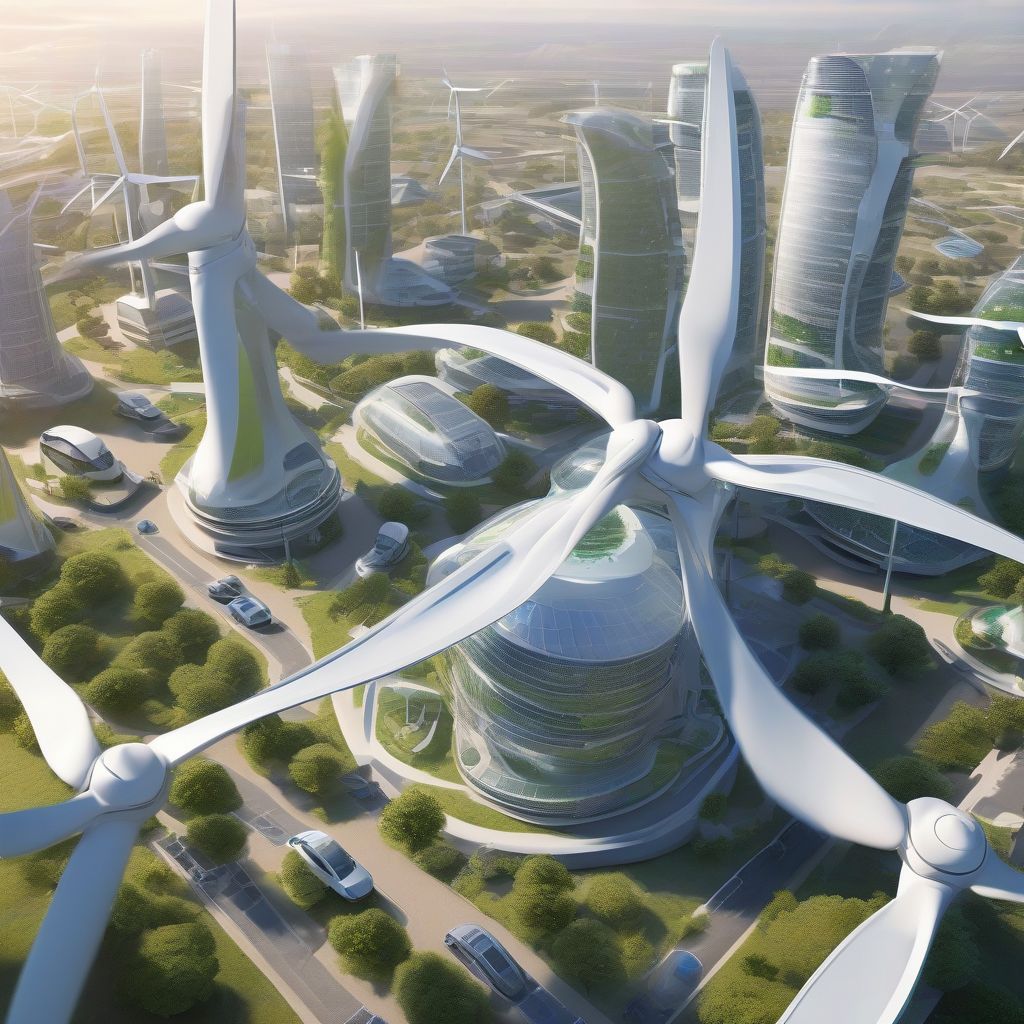Imagine a city skyline, not dominated by smoke stacks, but by sleek wind turbines and solar panels glinting in the sun. This isn’t a scene from a futuristic movie; it’s the emerging reality of smart cities embracing renewable energy. As the world grapples with climate change, these urban centers are transforming into beacons of sustainability, demonstrating how we can power our lives with minimal environmental impact.
The Symbiotic Relationship: Smart Cities and Renewable Energy
Smart cities leverage technology and data to improve efficiency and quality of life for residents. This same drive for optimization makes them a perfect match for renewable energy sources. Here’s how this symbiotic relationship plays out:
1. Reduced Carbon Footprint: The Heart of the Matter
Traditional power generation, heavily reliant on fossil fuels, is a major contributor to greenhouse gas emissions. Smart cities are tackling this head-on by integrating renewable energy sources like:
- Solar Power: Rooftop solar panels on homes and buildings, as well as large-scale solar farms, harness the sun’s energy to generate clean electricity.
- Wind Energy: Urban areas, often situated in windy locations, can utilize wind turbines to convert wind power into electricity.
- Hydropower: Cities near rivers or coastal regions can tap into hydropower for consistent renewable energy generation.
- Geothermal Energy: Utilizing the earth’s heat, geothermal power plants provide a reliable source of baseload renewable energy.
By reducing their dependence on fossil fuels, smart cities are significantly lowering their carbon footprint and contributing to a cleaner, healthier planet.
2. Smart Grids: Optimizing Energy Distribution
A smart grid is the energy equivalent of a high-speed internet connection for your city. It uses sensors, data analytics, and automated controls to:
- Balance Supply and Demand: Renewable energy sources can be intermittent. Smart grids predict fluctuations in energy generation and consumption, ensuring a stable energy supply.
- Integrate Distributed Generation: Solar panels on rooftops become mini-power plants. Smart grids manage the flow of electricity from these distributed sources, maximizing their efficiency.
- Reduce Transmission Losses: By optimizing energy distribution, smart grids minimize wasted energy during transmission, leading to greater overall efficiency.
3. Energy Efficiency: Doing More with Less
Smart cities aren’t just about generating clean energy; they’re also about using it wisely. They implement a range of energy efficiency measures:
- Smart Buildings: Sensors monitor and adjust lighting, heating, and cooling systems based on occupancy and real-time conditions, drastically reducing energy waste.
- Smart Street Lighting: LED lights, connected to sensors, illuminate streets only when needed, saving energy and reducing light pollution.
- Electric Vehicle Infrastructure: Charging stations for electric vehicles (EVs) are strategically located throughout smart cities, encouraging the adoption of these eco-friendly vehicles.
Real-World Examples: Cities Leading the Charge
- Copenhagen, Denmark: This city aims to become carbon-neutral by 2030, relying heavily on wind power, district heating, and sustainable transportation.
- Singapore: Known for its vertical gardens and green spaces, Singapore is also a leader in solar energy adoption and energy-efficient building design.
- Amsterdam, Netherlands: With ambitious plans to be completely energy-neutral by 2040, Amsterdam is promoting cycling, electric vehicles, and green building practices.
The Future is Bright: The Impact of Renewable Energy on Smart Cities
The integration of renewable energy isn’t just about environmental responsibility; it’s about building more resilient, livable, and economically competitive cities. Here’s how this translates into tangible benefits:
- Improved Air Quality: Reducing dependence on fossil fuels directly translates to cleaner air, leading to significant public health improvements, particularly for those with respiratory conditions.
- Job Creation: The renewable energy sector is a rapidly growing industry, creating jobs in manufacturing, installation, maintenance, and research & development.
- Energy Independence: By producing their own clean energy, smart cities are less reliant on external sources, making them more resilient to energy price fluctuations and geopolitical instability.
- Enhanced Quality of Life: Green spaces, pedestrian-friendly streets, and reduced noise pollution – all contribute to a higher quality of life for urban residents.
Conclusion: A Sustainable Urban Future
The transition to smart cities powered by renewable energy is a journey, not a destination. As technology advances and cities continue to innovate, we can expect even more creative solutions for sustainable urban living. By embracing clean energy, smart cities are not just building a brighter future for their residents; they’re illuminating a path for a more sustainable world.
Are you interested in learning more about how sustainable technology is shaping the automotive industry? Check out our article on How Sustainable Technology Is Shaping the Automotive Industry. Or, if you’re curious about how sustainable technology is impacting our everyday lives, delve into The Future of Sustainable Technology in Everyday Life.
 Renewable Energy Powering a Smart City
Renewable Energy Powering a Smart City
[amazon bestseller=”smart city technology”]
